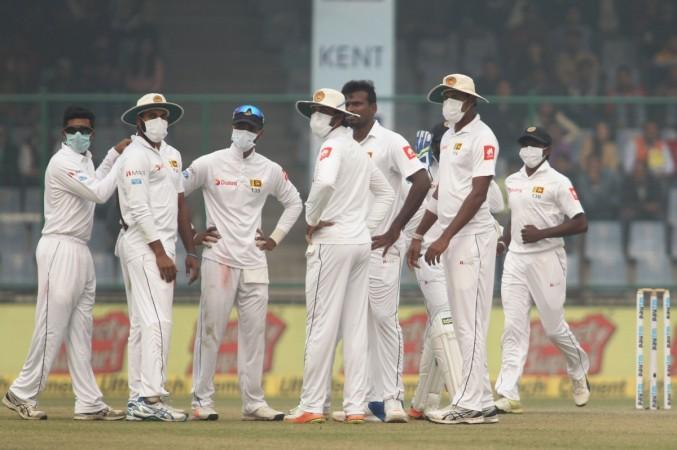
Board of Control for Cricket in India (BCCI) acting president CK Khanna on Sunday, December 3 lashed out at the Sri Lankan cricket team members, who were troubled by poor air quality on a smoggy afternoon in New Delhi.
Mask-clad Sri Lankan players, including senior campaigners Dinesh Chandimal and Angelo Mathews, decided to hold up proceedings after complaining of the deteriorating air quality during the post-lunch session on second day of the ongoing third Test at the national capital.
A delay of more than 15 minutes seemed to have led to the dismissals of R Ashwin (4) and Virat Kohli (243). The visitors were keen on not continuing even after the latter's dismissal as they were short of bowling options after both their pacers -- Lahiru Gamage and Suranga Lakmal -- walked off the field.
A miffed Kohli was forced to declare the Indian innings on 536 for 7, shortly after the chaotic scenes at Feroz Shah Kotla that even warranted Indian coach Ravi Shastri's entry onto the field.
"If 20,000 people in the stands did not have problem and the Indian team did not face any issue, I wonder why Sri Lankan team made a big fuss. I will need to talk to the secretary and ask him to write to the Sri Lanka Cricket," Khanna told the Press Trust of India on Sunday.
Also read: Delhi pollution: Were Sri Lanka players right in causing delays? Former India coach has this to say
SLC demands explanation
Meanwhile, Sri Lanka Cricket (SLC), according to NDTV, has asked its Indian counterpart why Delhi was chosen as the venue for the final Test of the ongoing three-match series, given the recent troubles the city has faced due to air pollution.
The air pollution, which has been a much-talked about issue over the last few weeks in the national capital, worsened on Sunday, according to Central Pollution Control Board (CPCB).
"Exposure to such air for a prolonged period can trigger respiratory illness. The most dominant pollutants are PM2.5 and PM10. These are ultrafine particulates, which can measure up to 30 times finer than the width of a human hai," CPCB stated.
"The concentration of PM2.5 and PM10 were 223 and 383 micrograms per cubic metre at 1pm today afternoon. The corresponding 24-hour prescribed standards are 60 and 100."

















